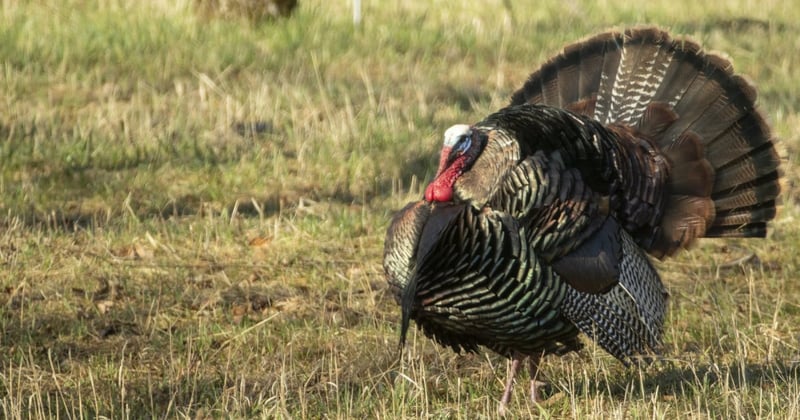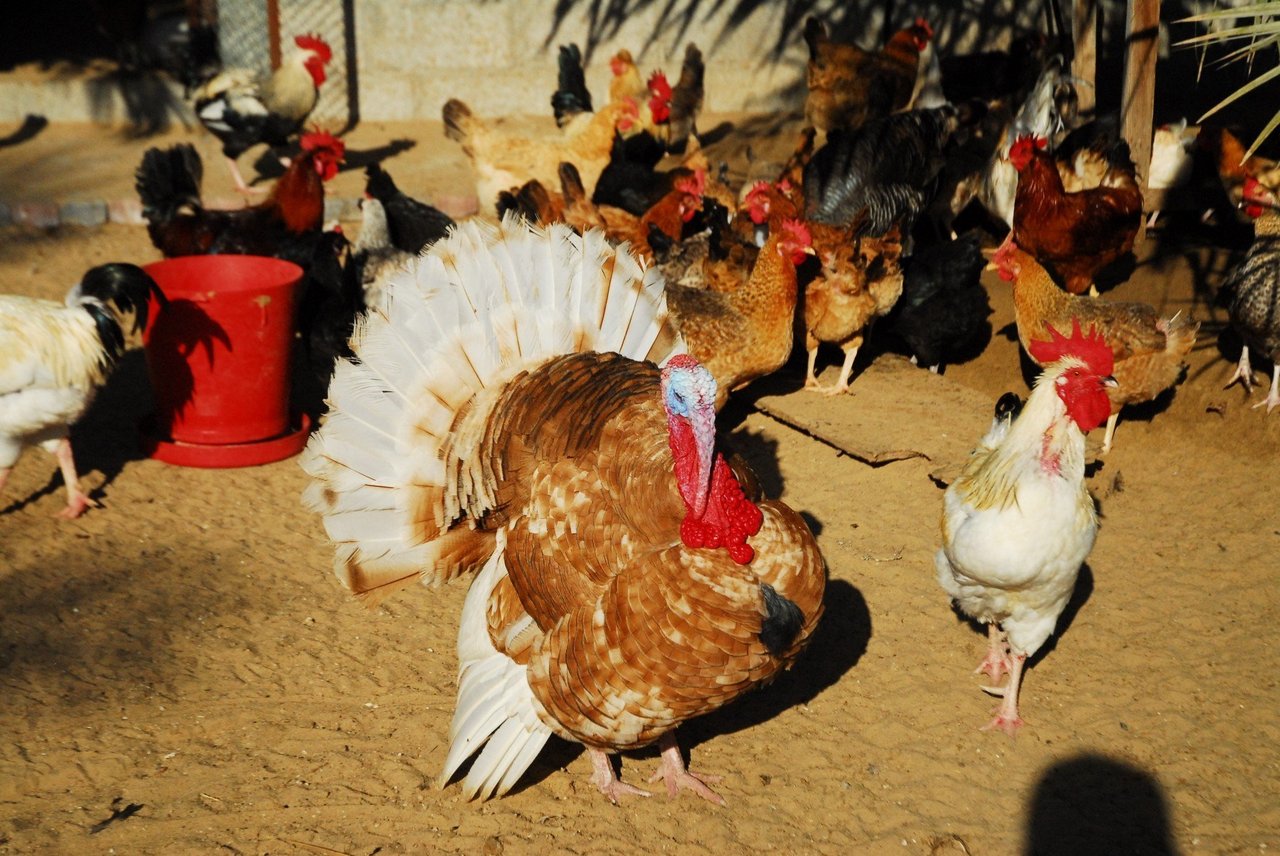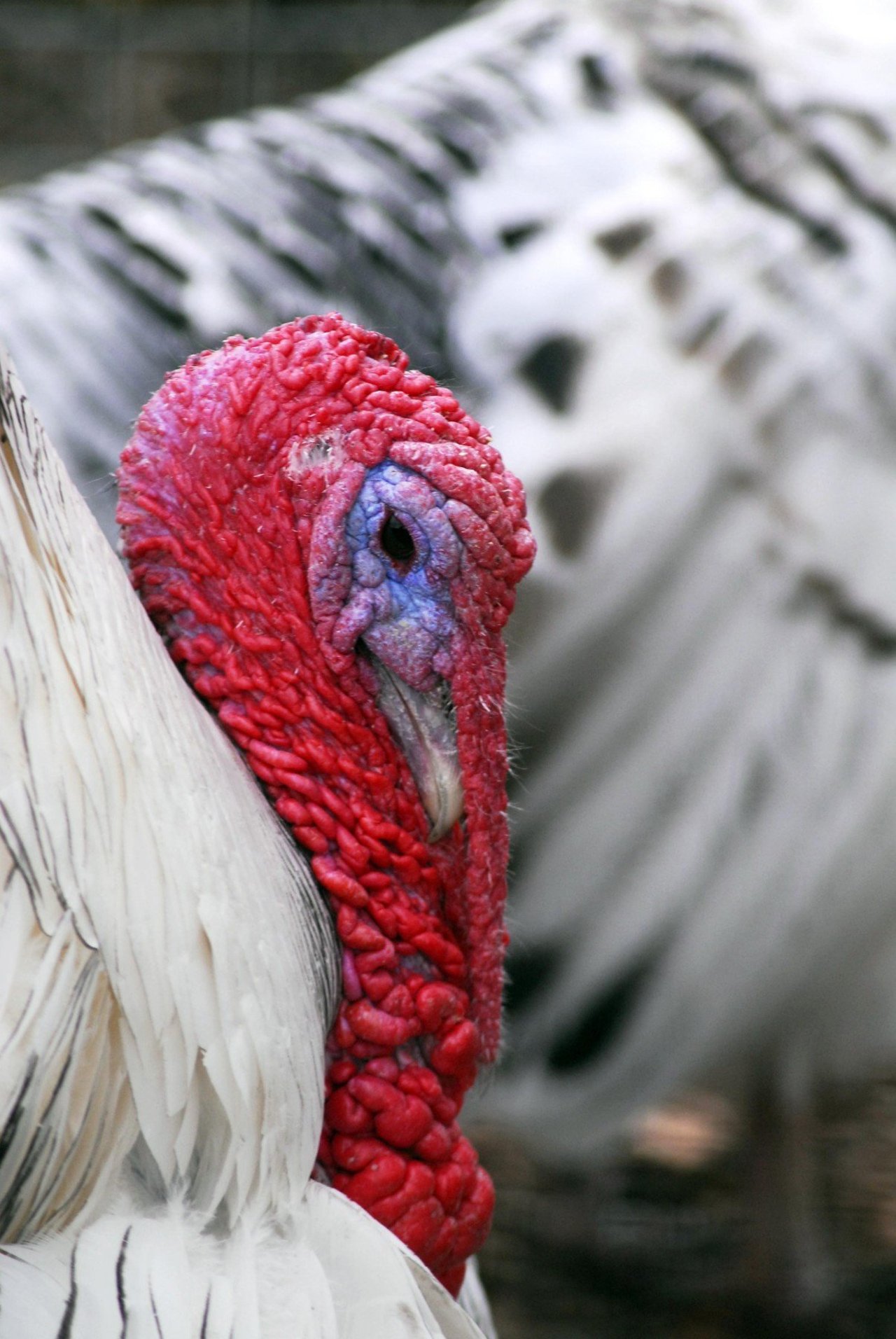
Turkeys are fascinating animals who deserve our protection.
At World Animal Protection, we’re taking time to celebrate wild and domestic turkeys and what makes them unique as animals. Did you know these facts about turkeys?
1. Do All Turkeys Gobble? Male and Female Turkey Sounds
Turkeys make a variety of different sounds including “purrs,” “yelps,” and “kee-kees.” Contrary to popular belief, it’s not just male turkeys that gobble. Female turkeys gobble too! Male turkeys are called “toms” while females are called “hens.”
2. Can Wild Turkeys Fly? Speed and Movement Facts
It’s a common myth that turkeys can’t fly (most likely because they feed on the ground), but wild turkeys have been known to fly up to 55 mph in short bursts. For domesticated turkeys, this is unfortunately not the case. They’re bred to be heavier in weight, almost twice as much as a wild turkey.
The majority of animals in farming live in conditions that cause suffering or stress, and that includes turkeys. Learn more about the ways that turkeys suffer in factory farms, and help us stop the continued expansion of low-welfare factory farms.
3. Where Do Turkeys Sleep? Wild Turkey Habits
Turkeys spend most of their time on the ground, but when it’s time to sleep, they fly up into trees. This is because turkeys can’t see well at night, and to protect themselves from predators, they roost at dusk and fly down at dawn.
4. Turkey Emotions: How Their Heads Change Color
You can tell a turkey’s emotions by the color of their heads. Colors can change from red to blue to white, depending on how excited or calm they are. The more intense the colors are, the more intense their emotions.
5. Male Turkey vs Female Turkey: Surprising Differences
One of the most unusual facts about turkeys involves their droppings. One way to determine whether a turkey is a male or female is by checking their droppings. A male’s poop will be shaped like the letter J, while the female’s is more spiral-shaped.
6. Turkey History Facts: Benjamin Franklin's Preference
Among interesting turkey history facts, while Benjamin Franklin did not advocate for the turkey as our National Bird, he did prefer them to bald eagles. In a letter to his daughter, Benjamin Franklin called the bald eagle “a bird of bad moral character” because they steal from other birds. He called the turkey a “much more respectable bird,” “a bird of courage,” and “a true original native of America.”
7. Amazing Facts About Turkey Vision and Senses
Among the more surprising facts about turkeys is that they have three times better vision than humans. They can also see in color, and their eyesight covers 270 degrees.
8. Presidential Pardons for Turkeys Started in 1989
It’s widely believed that the first presidential pardon for turkeys started when Abraham Lincoln’s son pleaded that the bird intended for Christmas dinner had a right to live just like any other creature, but it wasn’t until 1989 during George H.W. Bush’s administration that the official pardoning ceremony started.
9. Turkey Snoods Are for Mating
Snoods, the fleshy appendage that extends over a turkey’s beak, are for finding a suitable mate. According to the Journal of Avian Biology, females prefer males with longer snoods, and snood length can also be used to predict the winner of a competition between two males.
10. How Many Turkeys Are Killed Each Year? Statistics and Ethics
46 million turkeys are killed each year for Thanksgiving. That’s about one turkey for every person in Spain. To add, each turkey weighs about 30 pounds on average, which means Americans will consume 1.4 billion pounds of turkey.
Many who are cutting out red meat are turning to turkey—in 2020, US turkey consumption was nearly 16 pounds per capita. But these beautiful animals are highly intelligent, have distinct and playful personalities, and should not endure lives of suffering in the cruel factory farming industry.
By choosing to eat less meat and more plant-based protein, we can transform our food system, improve our health, safeguard our planet, and improve the lives of billions of farmed animals (including turkeys!).
You can help end this suffering today. Join us in supporting the Farm System Reform Act, a critical piece of legislation that would place a moratorium on large factory farms and help transform our broken food system. Together, we can create meaningful change for turkeys and billions of other farmed animals. Take action now and urge your legislators to support the Farm System Reform Act.

